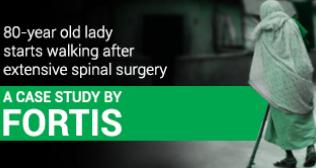
Recent Advancements in Brain Tumour Surgery
Modern technologies significantly change the outcome of brain tumour patients. With advancements in technology, brain surgeries are now safer. The advancements in technologies and facilities like MRI, Neuro cath lab, modular operation theatre, and neuro ICU have made brain surgeries easier, safe and smooth. The availability of modern gadgets, new surgical techniques and multi-disciplinary teamwork ensure early recovery in such cases.
1. Newer protocols in MRI: Newer protocols (functional MRI, tractography, etc.) add to the speed and quality of information and help in the early diagnosis of brain tumours
2. Neuro-navigation: This is a computer-based intra-operative localization of lesions which increases the accuracy and safety during brain surgery. It is very helpful while operating in active areas of the brain and also helps to perform minimally invasive brain surgery
3. Fluorescence: This unique technology is being used in brain surgery for almost a decade and is available in India at selected centers only. This has significantly changed the outcome of brain tumour and brain haemorrhage patients. This modern technology enables the surgeon to localize a brain tumour during surgery and confirm a safe excision. The fluorescent dye is selectively picked up by the tumour cells and is visualized through a special operating microscope. Fluorescence enables the vascular neurosurgeon to perform intra-operative angiography while operating on an aneurysm or other vascular malformations
4. Awake craniotomy: Certain brain tumours located at or near active areas of the brain need special surgical skills. This is enhanced by operating on a patient while he/she is awake and performing certain tasks assigned to him/her like singing, clapping, etc. Neuro-anaesthetists play a significant role in keeping the patient free from pain and anxiety
5. Intra-operative brain mapping: With the help of this advanced technology, electric signals can be read by electrodes placed on the surface of the brain. They guide us about different functional areas which help to plan the trajectory to enter inside the brain and safely remove the lesion, especially in epilepsy surgery
6. Intra-operative imaging: This technology is required for real-time brain imaging during surgery, which can be helpful in certain cases of brain tumours and can be done with the help of ultrasound, CT scan or MRI
7. Angiography: In case of brain haemorrhage, pre-operative DSA (Digital Subtraction Angiography) is performed to look for vascular malformation inside the brain. Intraoperative DSA with an advanced C-arm machine can be done to localize the lesion and ascertain complete excision. DSA helps to check the vascularity of brain tumours and pre-operative embolization can be done to reduce intra-operative blood loss.
8. Safe anaesthesia: Safe anaesthesia by a qualified Neuro-anaesthesia team and post-operative care in a Neuro-ICU is mandatory for a good outcome after brain surgery.
With technological advancements, the results of brain surgery have improved significantly in the last decade. A quick decision is imperative to prevent any delay. We are living in an ever-changing era of technology, whether it is in medical science or in our daily life. We need to adapt ourselves to that and bring the best out of it.
Categories
Clear allMeet the doctor

- Neurosurgery | Neurosurgery
-
20 Years
-
1500
 Available at 1 different locations
Available at 1 different locations




















